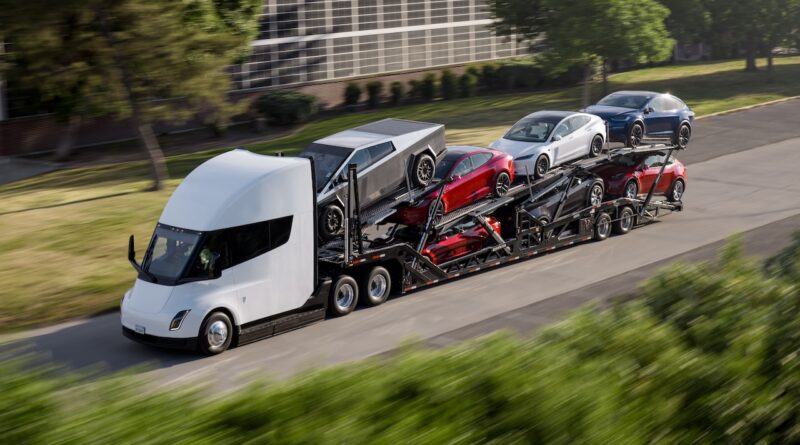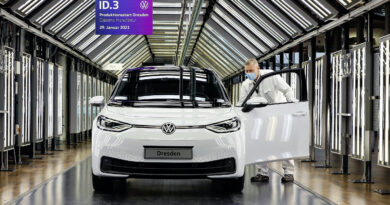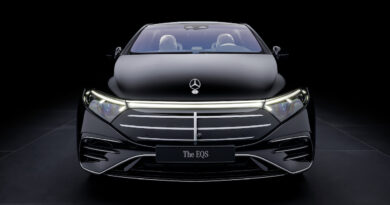Which is best for the environment: EV or ICE? Here’s the truth about CO2 emissions across the lifecycle of new cars
EVs are good for the environment, right?
Not everyone is convinced.
Social media is awash with misinformation and unsubstantiated claims that electric cars are actually worse for the environment because of the manufacturing of heavy battery packs, many with materials that are difficult to mine.
Fortunately plenty of reputable organisations have examined the issues surrounding CO2 emissions for EVs. Detailed research from science agencies, respected analysts and car manufacturers has resulted in authoritative data.
EV FAQ: All your electric car questions answered
READ MORE: The ultimate guide to buying an EV in Australia: Everything you need to know
READ MORE: Electric cars last 18 years on average, matching a typical petrol or diesel vehicle for longevity
We’ve collated some of the better ones below and summarised what each claims.
Speaking broadly, though, all come up with the same conclusion: The CO2 intensive mining industry we have today and the manufacturing of an electric car results in more emissions than an equivalent internal combustion engine (ICE) vehicle.
But over the life of the vehicle the ledger very much swings in the favour of EVs over ICE.
And that’s before you factor in the EV benefits around other emissions, such as noxious exhaust gases.
CSIRO
Our own national science agency has an interesting web page that looks at EVs and some of the basics around batteries and living with an electric car.
It also looks at environmental concerns with EVs and concludes that “though EV manufacturing and battery production impacts the environment, studies show they have a much lower lifetime carbon footprint than combustion engine cars, particularly when charged with renewable energy”.
READ THE COMPLETE CSIRO REPORT HERE
BloombergNEF
The “new energy finance” division of the US-based software, data and media giant has published a detailed analysis of life cycle CO2 emissions for a battery electric vehicle and ICE vehicle produced in 2020. It assumes those vehicles will cover 250,000km over their life.
It looks at the production of those vehicles in five countries: UK, Germany, France, US and China.
The emissions vary wildly, largely due to the differing electricity production.
But for each country the result is the same: the production of the EV emits more CO2 than the equivalent petrol-powered alternative.
But that is quickly paid back in CO2 savings during the life cycle; in the US, for example, Bloomberg NEF concludes that you only need to travel 27,000km for the EV to gain a CO2 advantage.
READ THE COMPLETE BLOOMBERG NEF REPORT HERE
International Energy Agency
The organisation that has 31 member countries and advises industry and governments has a terrific calculator that allows you to vary the parameters for ICE vehicles as well as plug-in hybrids and BEVs.
It even allows you to adjust where the electricity is sourced, including nuclear and renewables.
But even adjusting the calculator to assume 90 percent of electricity used by an EV is sourced from coal – remembering that about 40 percent of the Aussie grid is currently renewable energy (and 100 per cent in the ACT and Tasmania) the EV is still better than the petrol-powered alternative.
READ THE COMPLETE IEA REPORT HERE
US EPA
The United States Environmental Protection Agency busts a bunch of EV myths, including whether EVs are worse for the climate and whether battery manufacturing is as bad as some make out.
One of its conclusions is that “greenhouse gas emissions associated with an electric vehicle over its lifetime are typically lower than those from an average gasoline-powered vehicle, even when accounting for manufacturing”.
READ THE COMPLETE US EPA REPORT HERE
European Environmental Agency
In 2018 the EEA published a detailed report looking at the life cycle assessment (LCA) of BEVs and internal combustion engine vehicles (denoted in the report as ICEVs). The focus was on greenhouse gas (GHG) emissions.
It summarises: “The majority of LCAs show that BEVs have lower life cycle GHG emissions than ICEVs. In general, GHG emissions associated with the raw materials and production stage of BEVs are 1.3-2 times higher than for ICEVs … but this can be more than offset by lower per kilometre use stage emissions, depending on the electricity generation source”.
READ THE COMPLETE EEA REPORT HERE
International Council on Clean Transportation
The US-based non-profit think tank and research institute published a detailed life cycle assessment of EVs versus ICE vehicles in 2021. It also forecasts what the CO2 impact could be in 2030 once more of the world weans itself off fossil fuel, in turn lowering the environmental impact further, especially with manufacturing and charging of EVs. It runs those scenarios across Europe, the US, China and India with all coming to the same conclusion: “battery electric vehicles (BEVs) have by far the lowest life-cycle GHG emissions” and the difference between EV and ICE is set to grow in future.
READ THE COMPLETE ICCT REPORT HERE
Polestar
The Chinese-owned Swedish-based car maker publishes detailed life cycle assessments of its products, the most recent of which is the Polestar 3.
It concludes that “38 percent of the total climate impact is caused by the material production and refining” with “the use phase contributing 37 percent of the vehicle’s total climate impact”. The battery modules account for “16 percent of the overall climate impact”
READ THE COMPLETE POLESTAR REPORT HERE
Tesla
Each year EV market leader Tesla publishes an impact report, looking at not only the environmental impact of its vehicles but also the home battery storage products. It also delves into manufacturing, among a range of other facets and factors.
It takes into account the manufacturing as well as operation and charging of the car and runs the scenario for three parts of the world: New York, France and China.
It also makes the point that EVs being charged from the grid will mean a reduction in emissions over the life of the vehicle due to a shifting towards renewables for grids across the world.





The heavy metals and the PFAS type chemicals that never break down are the most concerning problem with these vehicles. It seems this factor is often overlooked or just swept under the carpet. Currently only 5% of the batteries are being recycled, as it is a very dangerous and costly procedure to recycle them. Many lawsuits have been filed against Tesla for exaggerated range claims to unsafe and dangerous vehicle construction.